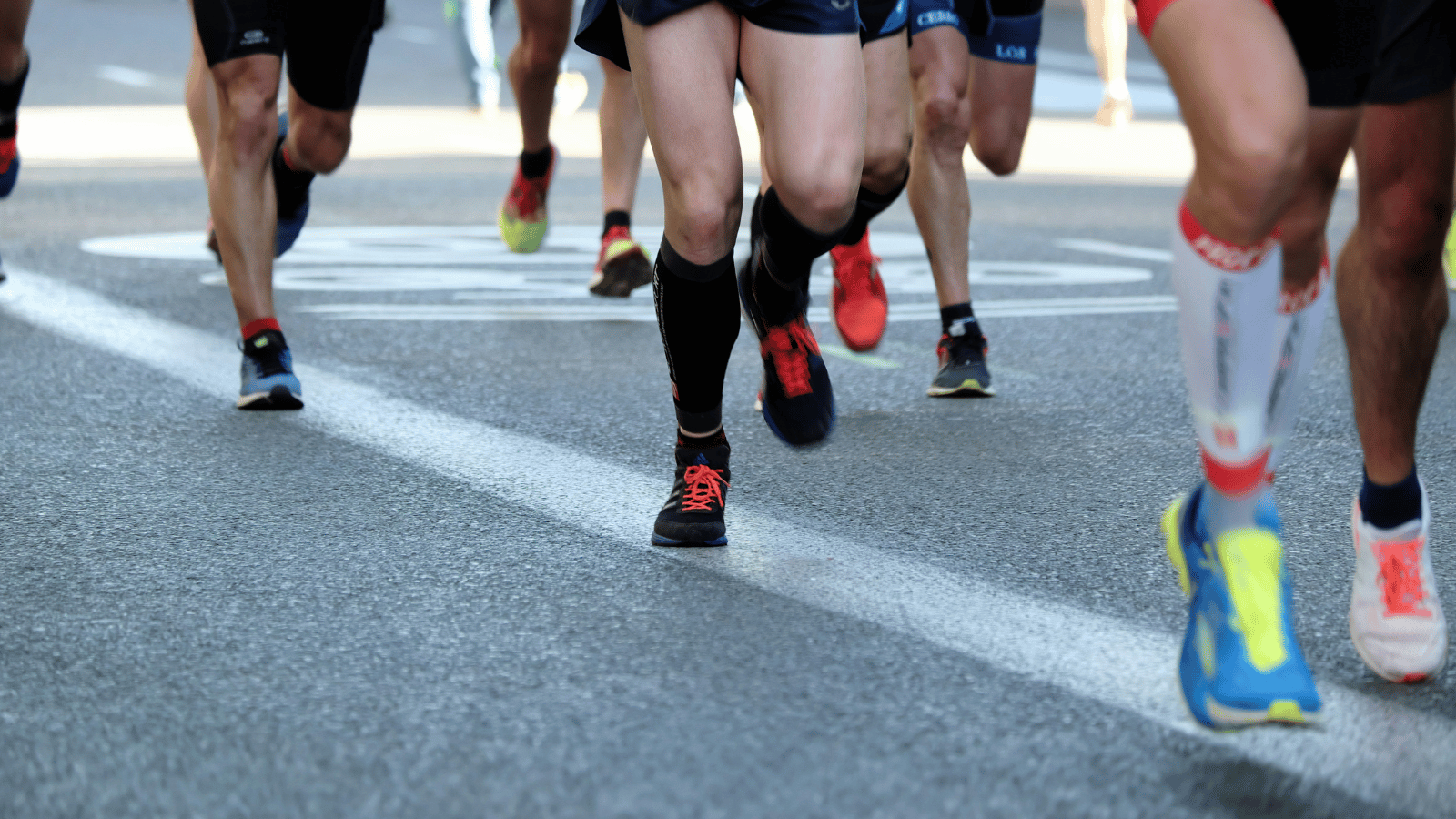Breathing Techniques for Runners
Based on a pro triathlete’s five top tips – breathing techniques for runners, expanded with research and practical steps you can apply on your next run.

Why breathing is the hidden gear-shift
Many runners feel a rough “first 10 minutes” where heart rate spikes and breathing feels out of control. Much of that discomfort is your nervous system moving from a calm, parasympathetic state (rest & digest) towards a sympathetic, “ready to move” state. Simple breath strategies can help you transition smoothly, steady your rhythm once you’re running, and then accelerate recovery after.
The five techniques (with how & why)
1) Pre-run activation: 5–10 “power breaths”
How: Stand tall. Take a deep, controlled inhale (preferably through the nose), then a sharp, complete exhale. Repeat 5–10 times. Stop if you feel light-headed.
Why: Brief, deliberate breathing drills can acutely increase sympathetic activity, priming you for movement. In a controlled study, a Wim-Hof-style protocol (breathing + cold) showed people can voluntarily up-shift sympathetic activity and stress-hormone responses—evidence that breath can modulate state quickly.
2) Get control when you feel “out of breath”: emphasise the exhale
How: Keep breathing normally, but every so often add a forceful exhale—like blowing out a candle—to help off-load CO2. Resume relaxed breathing after 1–3 strong exhales.
Why: The primary chemical driver of breathing is rising CO2 (hypercapnia), sensed by central and peripheral chemoreceptors; that rising CO2 is what produces the strong urge to breathe faster. Clearing CO2 can blunt that urge and settle rhythm. :contentReference[oaicite:1]{index=1}
3) Lock in a rhythm: use stride-linked breathing (e.g., 3-in / 2-out)
How: Inhale over three steps and exhale over two steps (a “3-2” pattern). Adjust as effort changes (e.g., 2-2 at tempo).
Why: Humans naturally show locomotor-respiratory coupling—breathing phase-locks to steps. This entrainment is seen across species and in trained runners; using it deliberately can stabilise mechanics and attention.
4) Breathe from the diaphragm, not the upper chest
How: Place one hand on chest and one on belly. Inhale so the belly expands first (diaphragm descends), then gently the ribs; exhale so the belly softens first. Practise at rest → walking → easy runs.
Why: Diaphragmatic breathing reduces accessory-muscle overuse and can improve efficiency and posture; broader sports reviews also associate diaphragmatic/slow breathing with better control and performance markers. Respiratory muscle training studies likewise show performance benefits in runners, supporting the value of better breathing mechanics.
5) Speed recovery after your run: 4-4-4-4 “box breathing”
How: Walk for 2–3 minutes. Then inhale 4s → hold 4s → exhale 4s → hold 4s. Continue 2–5 minutes (longer if it feels good).
Why: Slow, paced breathing reliably increases vagal (parasympathetic) activity and heart-rate variability (HRV)—physiological signs of down-regulation and recovery—according to a systematic review and meta-analysis.
Quick start plan (this week)
- Before each run: 5–10 power breaths; 30–60 seconds of easy strides while finding your 3-2 rhythm.
- During easy runs: Keep 3-2 or 4-3 rhythm; add a few forceful exhales on hills or when breathing feels “ragged”.
- During workouts: Rhythm will tighten (2-2 at threshold/tempo). Use 1–2 forceful exhales when the urge to gasp spikes.
- After every run: Walk 2–3 minutes, then 2–5 minutes of box breathing.
- Skill work: 5 minutes diaphragmatic practice daily (at your desk or lying down) to groove the pattern.
Good-to-know & safety
- Breathing patterns are individual—match cadence to your stride and effort.
- Power breaths are a brief primer, not hyperventilation. If you feel dizzy, stop and resume normal breathing.
- If you have a respiratory or cardiovascular condition, consult a clinician before changing breathing routines.
Selected research
Respiratory drive is strongly regulated by CO₂ via chemoreceptors.
Voluntary breathwork can up-shift sympathetic activity (mechanistic support for “activation” drills).
Locomotor-respiratory coupling (stride–breath entrainment) occurs in running humans and trained athletes.
Slow breathing increases HRV (parasympathetic activation)—useful for cooldown and recovery.
Respiratory muscle training can improve running performance in specific contexts (supporting the value of better mechanics/breath control)
FAQs
Is nose or mouth breathing better for running?
Use the nose when effort is easy to moderate—it humidifies air and can stabilise rhythm. As intensity rises, most runners naturally switch to mixed or mouth breathing to meet ventilatory demand. Let effort, not dogma, decide.
What if I get a side stitch?
Slow down, switch to a longer exhale (try 2 steps in / 3–4 steps out) and massage just below the ribs on the painful side while exhaling. Resume your normal rhythm once it eases.
How long until diaphragmatic breathing feels natural when I run?
Most runners notice progress in 2–4 weeks of daily practice (5 minutes at rest + during easy runs). Like cadence, it becomes automatic with repetition.
Can “power breaths” make me dizzy?
They can if overdone. Keep them brief (5–10 reps), do them standing still, and stop immediately if light-headed—then breathe normally.
Should I always stick to 3-in / 2-out?
No—treat 3-2 as a starting template. At higher intensities you may prefer 2-2; for very easy running 4-3 can feel smoother. The goal is a steady, repeatable rhythm.
This guidance is general information for healthy adults and is not healthcare of medical advice. If you have a respiratory or cardiovascular condition, seek medical advice before changing your breathing routines.
